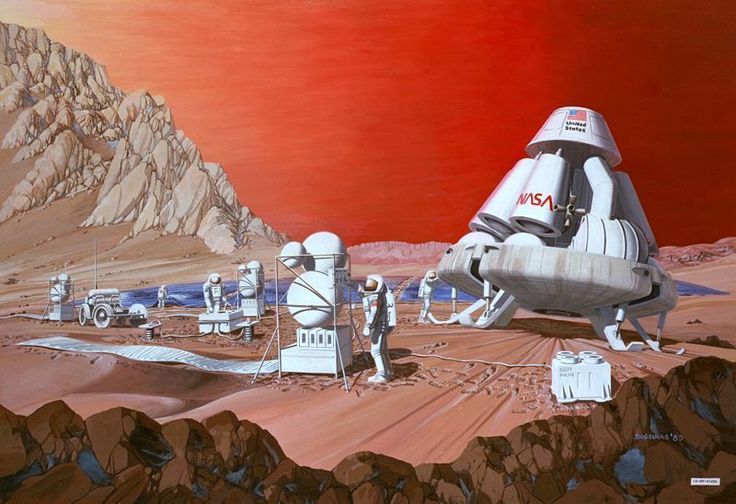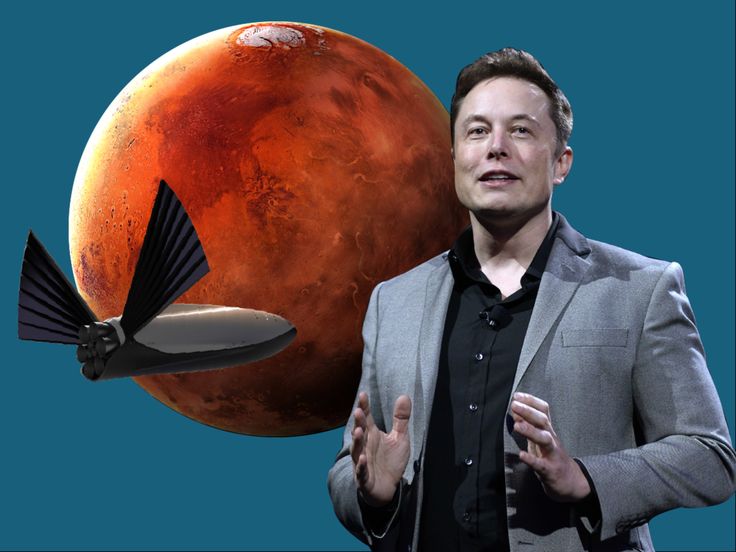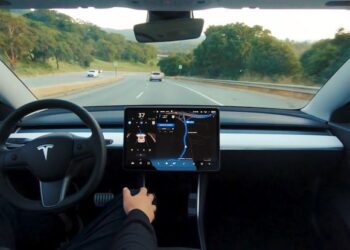In an age defined by rapid technological innovation and space exploration breakthroughs, few figures have captured the public’s imagination like Elon Musk. The CEO of SpaceX and Tesla, Musk’s ambitious plans for Mars colonization have sparked worldwide debates and inspired countless dreamers. His vision of establishing a human settlement on Mars goes beyond scientific achievement—it envisions a future where humanity becomes a multi-planetary species, ensuring survival in the face of potential Earth-bound catastrophes.
This article delves into the multifaceted aspects of Elon Musk’s Mars colony plans. It examines the historical context of space exploration, the technological innovations spearheaded by SpaceX, and the intricate roadmap that Musk and his team have developed. Additionally, it explores the challenges and opportunities associated with colonizing Mars, the potential impact on Earth, and the broader implications for the future of humanity.
The Dream of a Multi-Planetary Species
For centuries, humankind has looked to the stars with wonder and curiosity. The idea of leaving Earth and settling other planets has been a staple of science fiction, but today, it is fast becoming a tangible goal. Elon Musk’s Mars colonization plan is rooted in the belief that establishing a permanent settlement on Mars is essential for the long-term survival of our species. By diversifying humanity’s habitat, we not only mitigate the risk of extinction from Earth-bound disasters but also unlock opportunities for scientific discovery, economic growth, and technological innovation.
Musk’s philosophy is simple: if humanity is to endure, it must eventually venture beyond our home planet. The colonization of Mars is seen as a stepping stone—a pioneering endeavor that will propel us into the broader cosmos and lay the groundwork for further interplanetary exploration. Through his work with SpaceX, Musk has transformed what was once considered a distant dream into a credible and urgent mission.
SpaceX: The Vanguard of Mars Colonization
At the heart of Musk’s Mars plans is SpaceX, a private aerospace manufacturer and space transport services company. Founded in 2002, SpaceX has dramatically reshaped the landscape of space exploration by introducing reusable rockets, reducing the cost of launches, and setting ambitious goals for human spaceflight. The company’s Starship spacecraft is a pivotal element in Musk’s Mars colonization strategy. Designed for long-duration missions, Starship is engineered to transport large numbers of people and cargo to the Red Planet.
SpaceX’s iterative approach to innovation has led to several groundbreaking achievements:
A. Reusable Rockets:
SpaceX has developed reusable rocket technology, drastically lowering launch costs and increasing mission frequency. This reusability is critical for sustaining a long-term Mars colonization program, as it enables repeated missions without the prohibitive expense of building new rockets for every flight.
B. Starship Development:
The Starship system is designed to be fully reusable, capable of carrying more than 100 passengers along with essential cargo. Its design focuses on efficiency, safety, and adaptability, allowing for both interplanetary travel and eventual Mars surface landings.
C. Rapid Prototyping and Testing:
SpaceX’s culture of rapid development and testing has accelerated progress in space technologies. Frequent test flights, though sometimes fraught with setbacks, have yielded invaluable data that continuously informs improvements in spacecraft design and performance.
D. Partnerships and Collaborations:
Musk’s vision is supported by collaborations with government agencies, private investors, and international space organizations. These partnerships are crucial in pooling resources, expertise, and technology necessary for the monumental task of Mars colonization.
Technological Innovations Paving the Way
Elon Musk’s Mars vision is not solely reliant on existing technology—it requires a host of groundbreaking innovations. These technological advances are fundamental to overcoming the unique challenges posed by interplanetary travel and establishing a sustainable human presence on Mars. Some of the key areas of technological development include:
A. Advanced Propulsion Systems:
Developing more efficient propulsion systems is critical for reducing travel time and fuel consumption. SpaceX is actively researching next-generation rocket engines that could significantly shorten the journey to Mars, making missions more feasible and safer for human crews.
B. Life Support Systems:
Sustainable life support on Mars is paramount. Innovations in closed-loop life support systems that recycle water, air, and waste are necessary to support long-term habitation. These systems will ensure that future Mars settlers have reliable access to clean air, water, and food.
C. Habitat Construction and Materials:
Mars colonization requires habitats that can protect inhabitants from harsh environmental conditions, including extreme temperatures, radiation, and dust storms. Research into advanced materials and construction techniques, such as 3D printing using Martian regolith (the layer of loose, heterogeneous material covering solid rock), is underway to create durable, self-sufficient living quarters.
D. Renewable Energy Solutions:
Sustainable energy sources, such as solar power and nuclear energy, will be essential for powering a Mars colony. Innovations in renewable energy technology will not only reduce reliance on Earth-based supply lines but also enable the colony to harness the abundant energy available on Mars.
E. Autonomous Robotics and AI:
Robotics and artificial intelligence are expected to play a significant role in building and maintaining Martian infrastructure. Autonomous robots can conduct exploratory missions, perform construction tasks, and even assist in emergency situations, thereby reducing human risk and increasing operational efficiency.
F. Interplanetary Communication Networks:
Establishing robust communication channels between Earth and Mars is critical. Advanced communication systems that minimize delay and ensure reliable data transmission will be necessary for coordinating missions, conducting scientific research, and maintaining the colony’s operational integrity.
The Roadmap for Mars Colonization
Elon Musk’s plan for Mars colonization is methodical, comprising several phases that gradually build up the infrastructure and population necessary for a self-sustaining colony. This roadmap, while ambitious, reflects a long-term commitment to turning the dream of Mars settlement into reality.
Phase 1: Robotic Exploration and Preliminary Missions
The initial phase focuses on sending robotic missions to Mars. These missions are designed to scout potential landing sites, analyze the Martian environment, and begin preliminary resource assessments. The data collected during this phase will inform the design and construction of future habitats.
- Key Objectives:
A. Identify safe landing zones and potential sites for resource extraction.
B. Test and validate new technologies in the Martian environment.
C. Establish preliminary communication and power infrastructure.
Phase 2: Cargo Missions and Infrastructure Development
Once robotic missions have mapped out the terrain, the next phase involves launching cargo missions to Mars. These missions will transport essential equipment, building materials, and supplies necessary for constructing a base.
- Key Objectives:
A. Deliver modular habitat components and life support systems.
B. Set up renewable energy installations and establish power grids.
C. Initiate local resource utilization projects, such as water extraction and in-situ resource utilization (ISRU) for fuel production.
Phase 3: Human Missions and Initial Settlement
The third phase marks a historic milestone—sending the first human crew to Mars. This phase will involve carefully selected astronauts and specialists who will live on Mars for extended periods, testing the viability of long-term colonization.
- Key Objectives:
A. Establish a human outpost with basic living quarters and scientific laboratories.
B. Integrate life support systems with human habitats to ensure sustainable living conditions.
C. Begin preliminary construction of communal facilities and research centers.
Phase 4: Colony Expansion and Self-Sufficiency
After the successful establishment of an initial outpost, the focus will shift to expanding the colony and moving towards self-sufficiency. This phase will see the gradual increase in population, development of advanced infrastructure, and the growth of local industries.
- Key Objectives:
A. Scale up agricultural and manufacturing capabilities to reduce reliance on Earth.
B. Expand residential and commercial areas to accommodate a growing population.
C. Foster innovation in energy, transportation, and communication systems tailored to Martian conditions.
Phase 5: Full-Scale Mars Settlement
The final phase envisions a fully operational, self-sustaining Mars colony that functions as an independent outpost of humanity. This settlement would not only support a robust community but also serve as a launchpad for further interplanetary exploration.
- Key Objectives:
A. Achieve complete self-sufficiency in food, energy, and manufacturing.
B. Develop a local government and social systems that reflect the values and aspirations of a new era of space exploration.
C. Establish long-term scientific research programs to further our understanding of Mars and the broader cosmos.
Overcoming the Challenges of Mars Colonization
While the vision of a Mars colony is captivating, it is not without significant challenges. The harsh Martian environment, combined with the complexities of interplanetary travel, presents numerous obstacles that must be addressed:
A. Environmental Hazards:
Mars is a hostile environment characterized by extreme temperatures, intense radiation, and frequent dust storms. These conditions pose a constant threat to both human life and the integrity of technological systems.
B. Logistical and Financial Hurdles:
The cost of interplanetary missions is astronomical, and the logistical challenges of transporting materials and personnel across millions of miles are immense. Securing sustained funding and international cooperation will be critical.
C. Psychological and Social Factors:
The isolation, confinement, and distance from Earth present unique psychological challenges for Mars settlers. Ensuring mental health and fostering a sense of community will be as important as technical solutions.
D. Technological Reliability:
The success of Mars colonization hinges on the reliability of cutting-edge technologies. Failures in propulsion systems, life support, or communication networks could have catastrophic consequences in the unforgiving Martian landscape.
E. Ethical and Legal Considerations:
Colonizing another planet raises important ethical and legal questions. Who governs the colony? How are resources allocated? What rights do Martian settlers have? Addressing these issues will be essential for building a fair and sustainable society on Mars.
Global Impact and the Future of Humanity
Elon Musk’s Mars colonization plan extends far beyond the technical and logistical challenges—it is a bold experiment in redefining the future of humanity. By establishing a permanent presence on Mars, we are not only creating a backup plan for human civilization but also sparking a new era of innovation, exploration, and international collaboration.
A. Inspiring Scientific Advancement
The quest to colonize Mars will undoubtedly drive significant advancements in science and technology. The challenges of interplanetary travel and sustainable living will encourage breakthroughs in energy production, robotics, artificial intelligence, and materials science. These innovations will have far-reaching applications, benefiting industries on Earth and propelling humanity toward a more technologically advanced future.
B. Economic Opportunities
Mars colonization could pave the way for a new frontier in economic development. As new industries emerge to support space travel, habitat construction, and resource extraction, we may witness the rise of a vibrant extraterrestrial economy. This economic expansion has the potential to create jobs, foster entrepreneurship, and stimulate global markets in ways we can scarcely imagine today.
C. Fostering International Cooperation
The scale and complexity of establishing a Mars colony necessitate unprecedented levels of international collaboration. Nations, private companies, and research institutions will need to pool their expertise and resources to overcome the myriad challenges of interplanetary settlement. In doing so, Mars colonization may serve as a unifying goal, promoting peace and cooperation on a global scale.
D. Redefining Humanity’s Place in the Universe
Perhaps the most profound impact of Mars colonization is philosophical. By venturing to Mars, humanity takes its first tangible step into becoming an interplanetary species. This monumental achievement would challenge our self-perception, expand our understanding of life’s possibilities, and inspire future generations to reach for the stars.
Criticisms and Counterarguments
Despite the excitement surrounding Elon Musk’s Mars colonization plans, there are valid criticisms and counterarguments that must be considered:
A. Technical Feasibility:
Skeptics argue that the current technology, while advancing rapidly, may still fall short of overcoming the extreme challenges of Mars colonization. The reliability of life support systems, the durability of habitat materials, and the safety of long-duration space travel remain points of concern.
B. Economic Viability:
The enormous costs associated with interplanetary missions raise questions about the economic feasibility of a Mars colony. Critics point out that the funds required might be better spent addressing pressing issues on Earth, such as climate change, poverty, and healthcare.
C. Ethical Considerations:
The ethical implications of colonizing another planet are profound. Questions regarding planetary protection, the potential contamination of Mars, and the rights of future settlers must be thoroughly addressed. Moreover, the idea of exporting Earth’s socioeconomic disparities to another planet presents an ethical dilemma that needs careful consideration.
D. Risk of Failure:
The history of space exploration is replete with risks and setbacks. A failure in a Mars colonization mission could not only result in the loss of lives and resources but also dampen public and political support for future space endeavors.
The Road Ahead: A Vision for Global Collaboration
Elon Musk’s Mars colony vision, while ambitious, represents a bold stride toward a future where humanity expands its horizons. Achieving this goal will require not only technical innovation but also a concerted effort from governments, industries, and international organizations. As we look ahead, several key factors will shape the path to Mars:
A. Policy and Regulation:
Establishing clear policies and regulatory frameworks is essential for managing the complexities of interplanetary travel and colonization. These frameworks will need to address issues of space law, resource ownership, and the ethical governance of new settlements.
B. Public Engagement and Education:
Garnering public support is vital for the success of Mars colonization. Educating people about the benefits and challenges of becoming a multi-planetary species can foster a sense of collective purpose and inspire future generations of scientists, engineers, and explorers.
C. Incremental Progress:
The journey to Mars will be marked by incremental progress. Each milestone, from successful cargo missions to the first human landing, will build the foundation for the next stage of development. Celebrating these achievements is crucial for maintaining momentum and public enthusiasm.
D. Sustainable Innovation:
Sustainable practices must be integrated into every stage of the Mars colonization process. Whether it’s the use of renewable energy on Mars or developing recycling systems for life support, sustainability will be the cornerstone of a successful and enduring colony.
Lessons from the Past and a Glimpse into the Future
The history of space exploration offers valuable lessons for the ambitious task of colonizing Mars. The Apollo missions, which once seemed insurmountable, demonstrated that with determination, innovation, and international cooperation, humanity could achieve the unimaginable. Musk’s Mars colonization plans draw inspiration from these pioneering efforts, while also pushing the envelope of what is possible in the 21st century.
The future of space exploration is bright, and Mars stands as the next great frontier. The successful colonization of Mars would not only validate decades of research and development but also open new avenues for scientific discovery. From the study of Martian geology to the search for past or present life, the scientific opportunities on Mars are boundless.
Conclusion
Elon Musk’s Mars colony vision represents one of the most audacious and inspiring endeavors of our time. It encapsulates the human spirit of exploration and our innate desire to push beyond known boundaries. While the challenges are immense—from technological hurdles and environmental hazards to economic and ethical considerations—the potential rewards are equally monumental. A successful Mars colony would safeguard humanity’s future, drive unprecedented scientific and technological advances, and redefine our place in the cosmos.
As SpaceX continues to innovate and refine its technologies, the dream of a self-sustaining human settlement on Mars moves ever closer to reality. Whether viewed as a backup plan for Earth or a bold step into the future, Musk’s vision invites us to imagine a world where humanity is no longer confined to a single planet. It challenges us to overcome our limitations, embrace global collaboration, and dare to reach for the stars.
In conclusion, the journey to Mars is not just about technology or economics—it is a testament to human ingenuity and the relentless pursuit of knowledge. By turning science fiction into science fact, Elon Musk is charting a course for future generations to explore, inhabit, and thrive on a new world. The next few decades promise to be a transformative period in space exploration, and the first footsteps on Mars may well be the first steps toward a boundless future for humankind.







